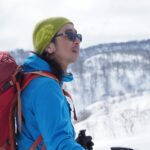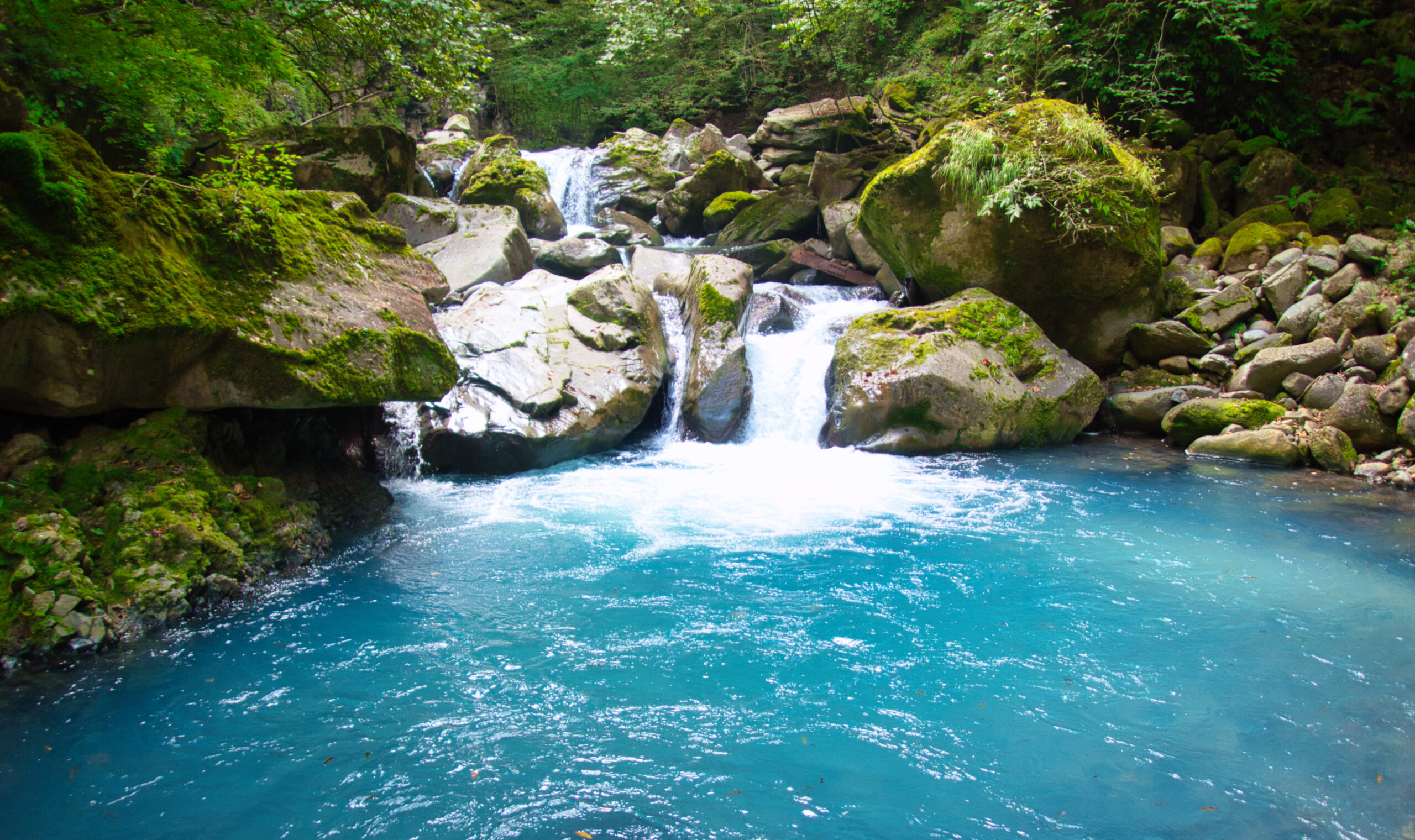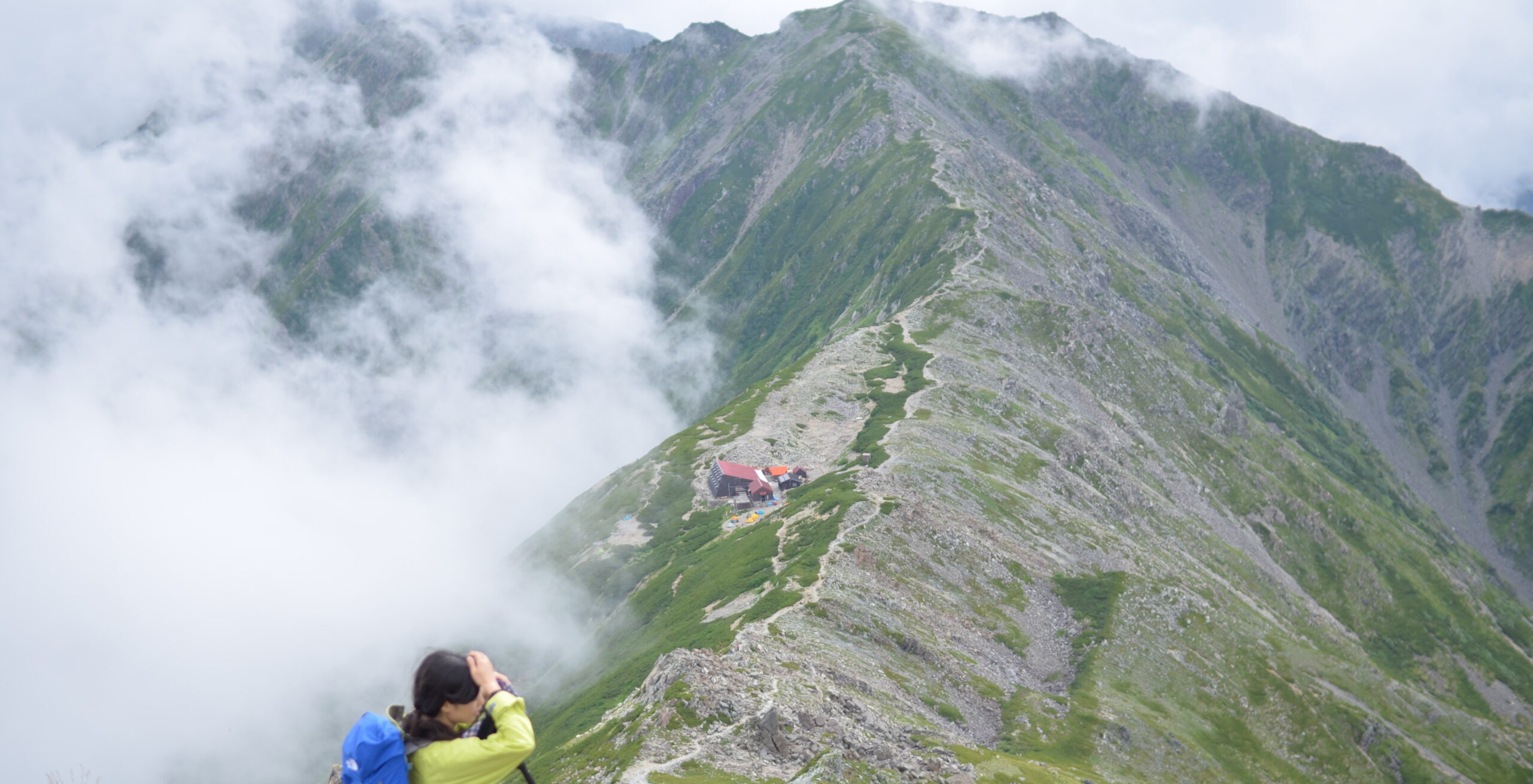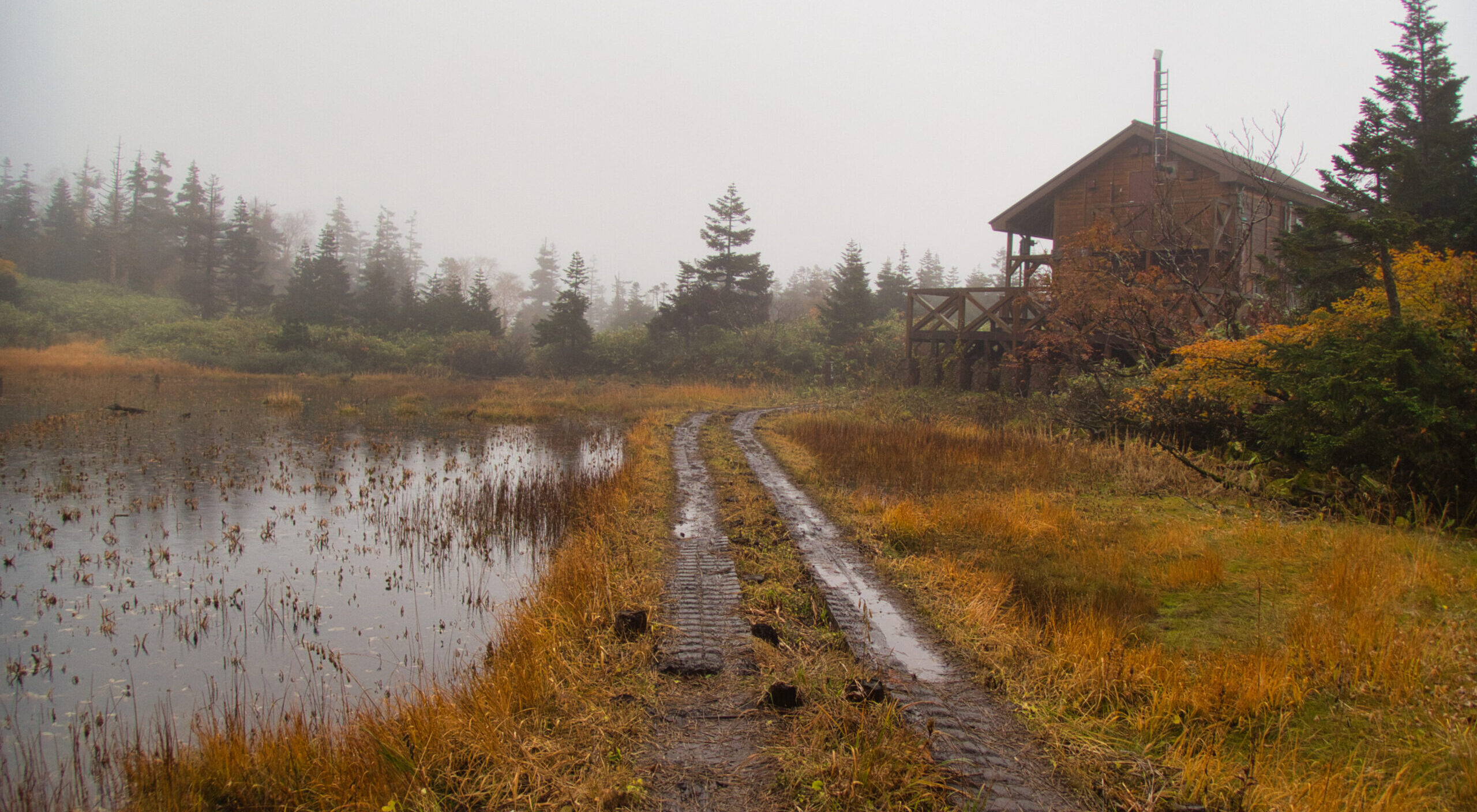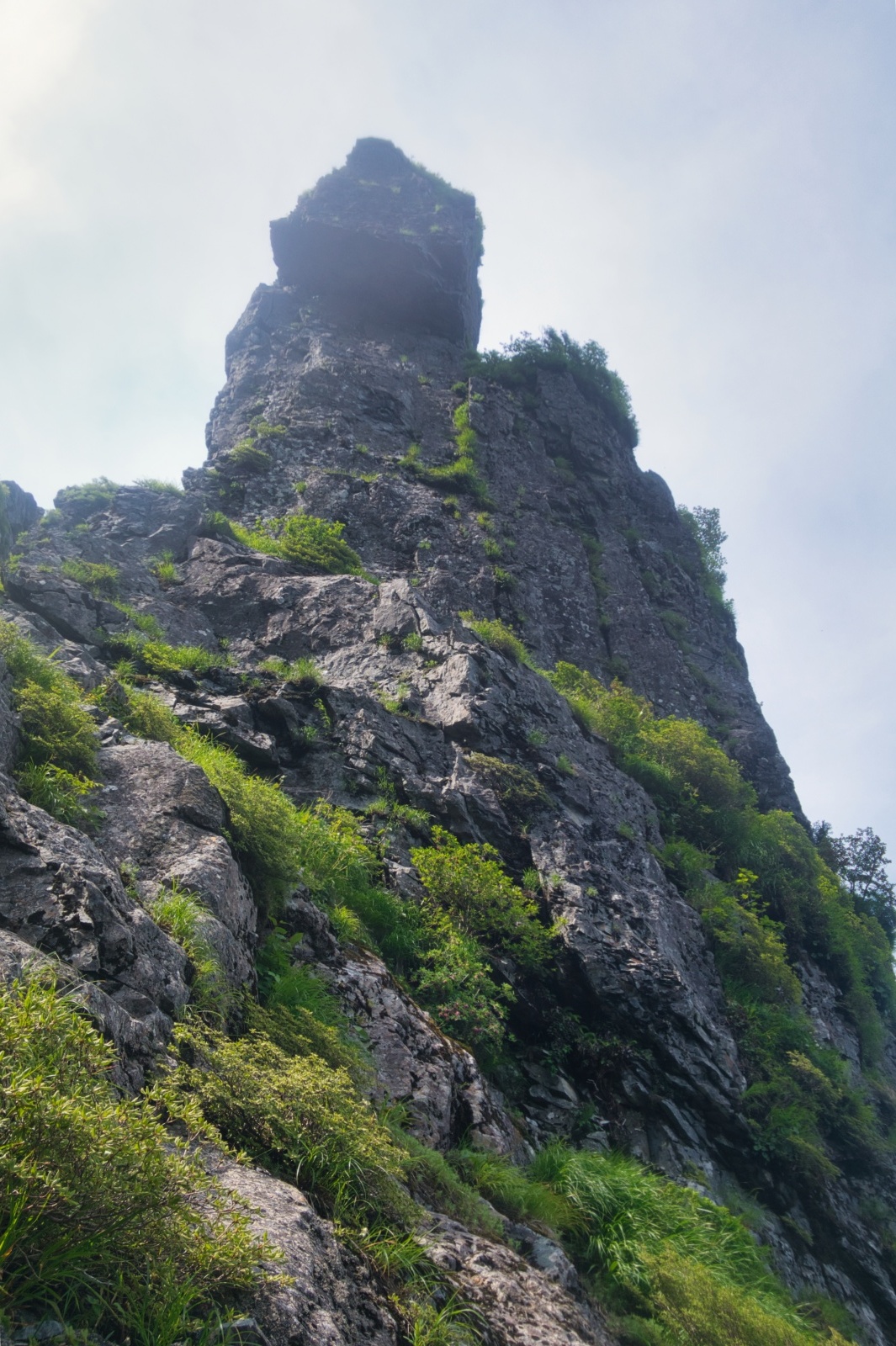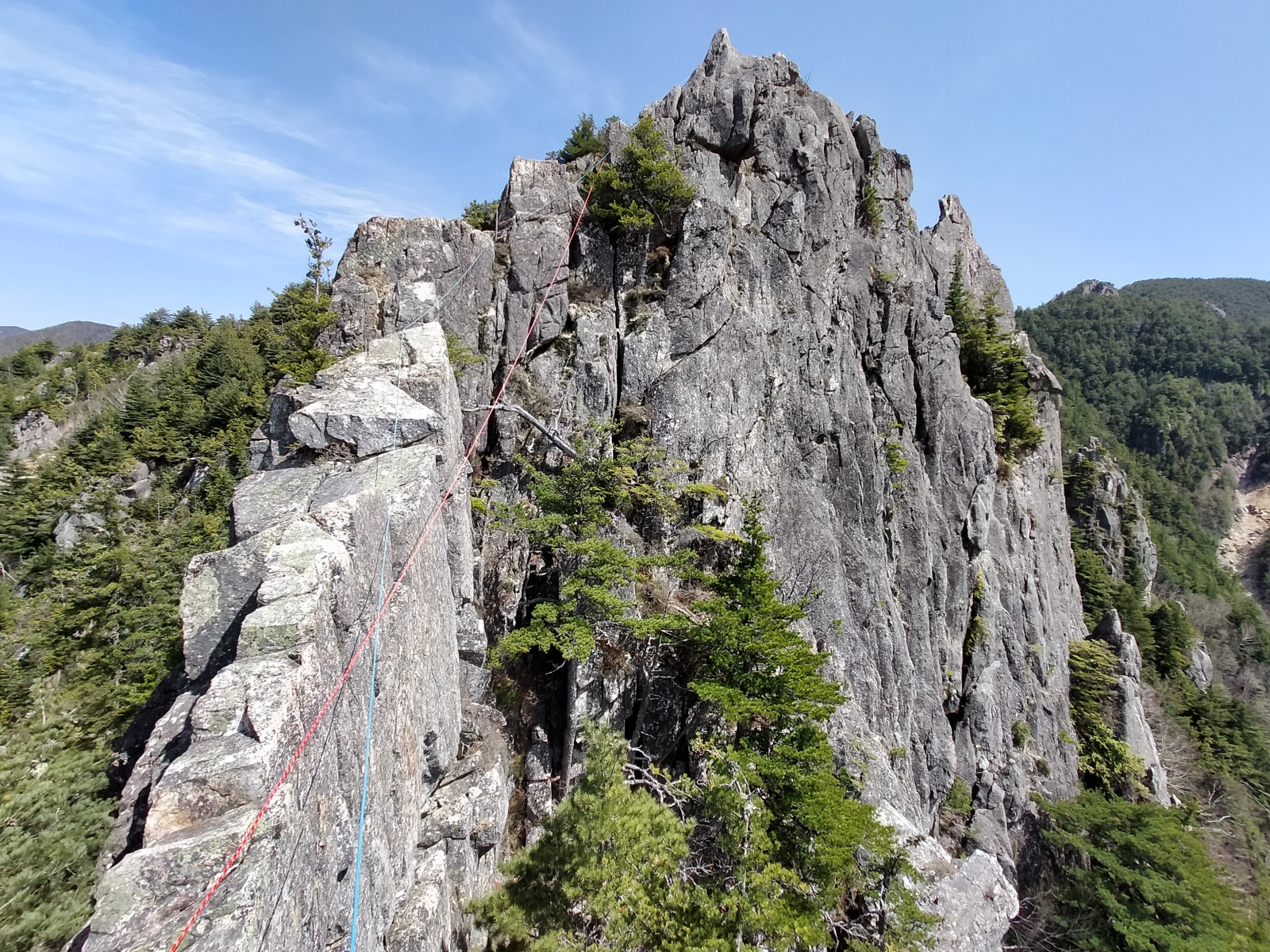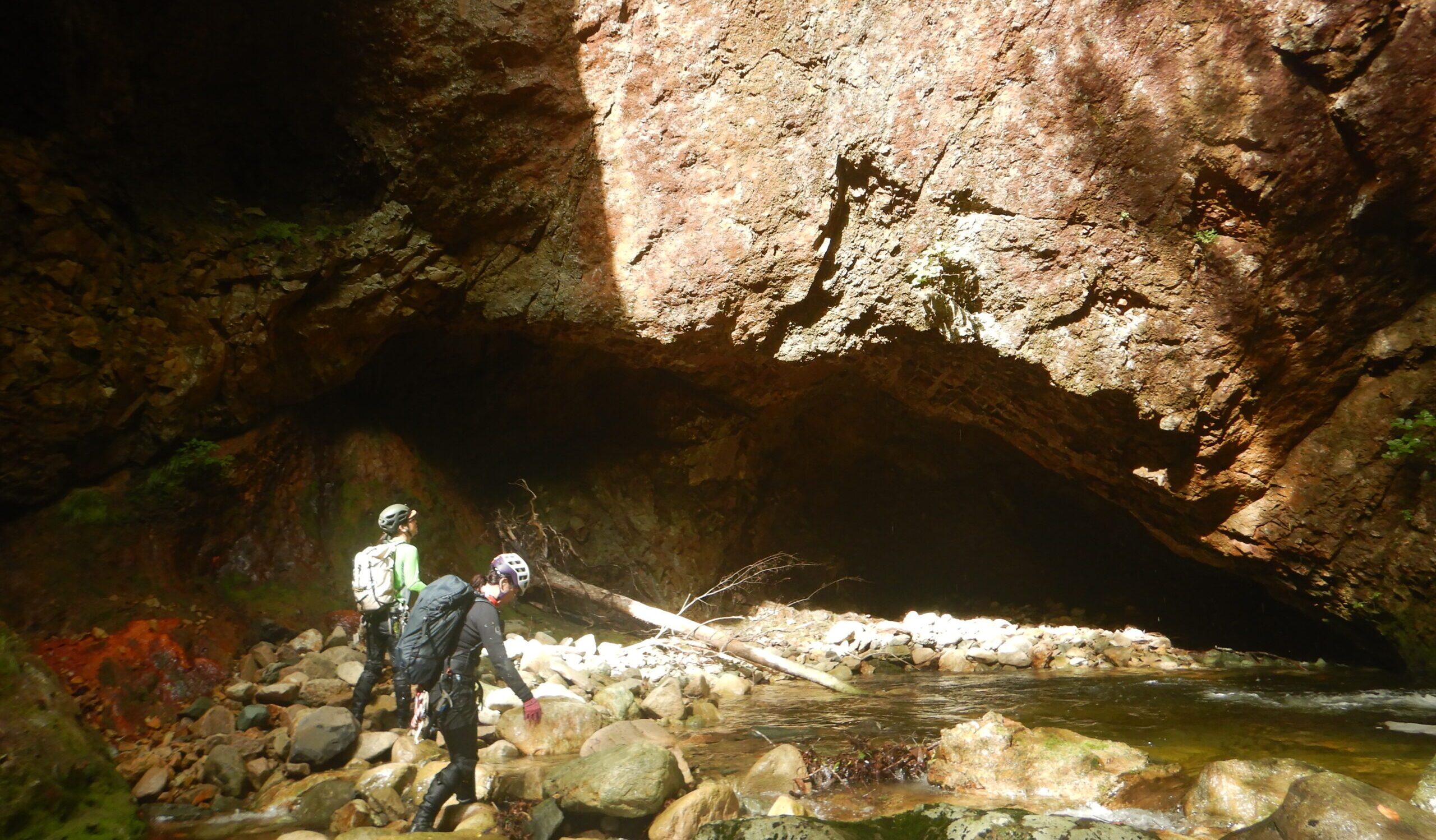【Deep Dive Chronicle】 Stream Climbing Iwanadomezawa: Sawanobori into the September V-Gorge
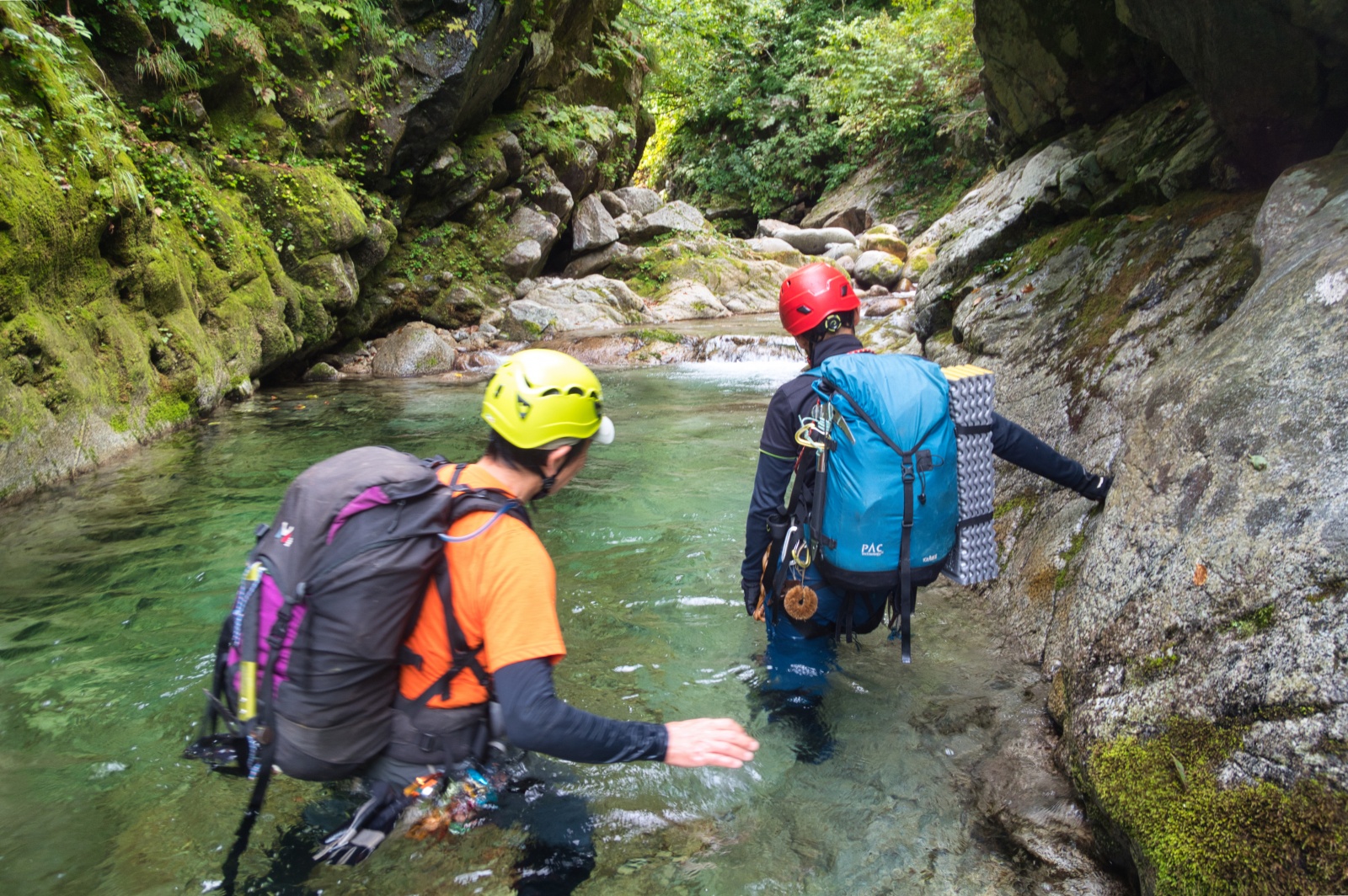
In early September, our focus turned to Iwanadomezawa in the Asahi Mountain Range. This two-day Sawanobori (Japanese stream climbing) expedition began with the apprehension of traversing late-season snow and navigating deep, narrow gorges.
Yet, the river delivered a quintessential Asahi experience: V-shaped valleys, technical sequences of continuous waterfalls, and the profound reward of emerging onto the alpine ridge.
Penned by an experienced stream climber, this log chronicles an autumn ascent deep inside the mountain canyons.
Part I: The Uncertain Approach
September 9th. The cold air knocking against the window of the car woke me before dawn at the Asahi Onsen (Hot Spring) Gate. After finishing work on Thursday and the long drive the day before, a faint sense of fatigue still lingered from sleeping in the car.
We were about to challenge Iwanadomezawa, known as one of the most beautiful and rugged streams in the Asahi Mountain Range. My mind was far from calm; I worried if we would be blocked by lingering snow patches or if we could pass the inevitable gorges.
At 6:40 AM, I set off from the gate with my two partners, S and M. We passed Asahi Onsen and followed the trail leading to the Nakatsuru Ridge. No matter how many times I cross it, the suspension bridge at Asahi River always feels precarious. The Asahi River below frothed white in the deep valley.
As we proceeded through the dimly lit forest, we found a large clump of Tonbimaitake (Black-staining Polypore) along the path. This edible mushroom, often found on fallen beech and oak trees, is lesser known than Maitake but equally delicious. It was a magnificent cluster. However, we had to press on. Reluctantly, I resolved to collect it on the way back and continued the ascent.
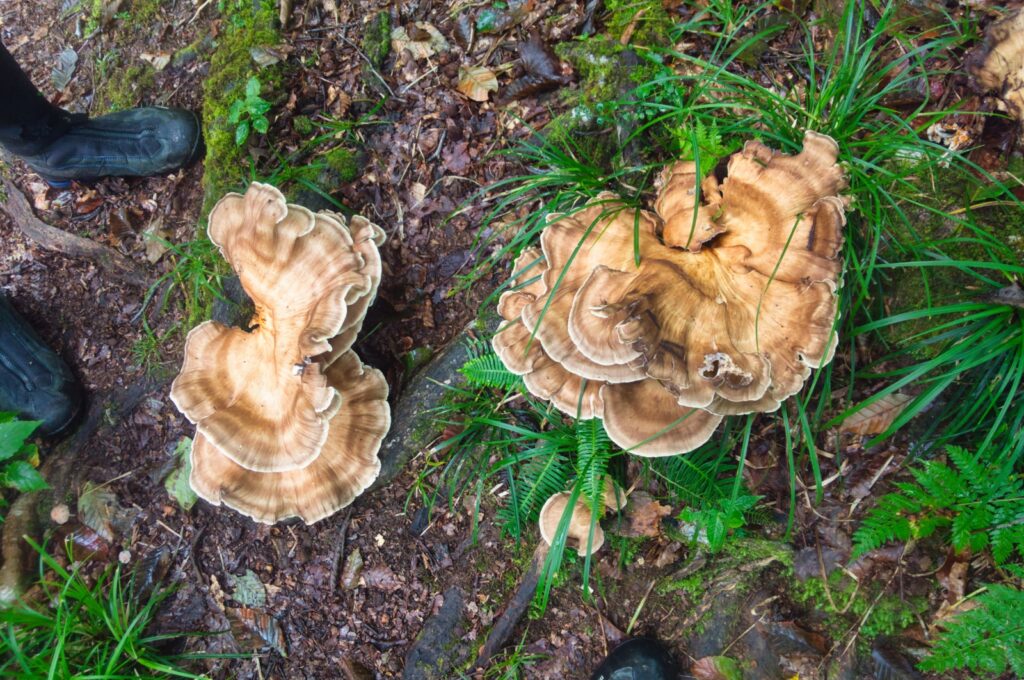
We advanced along the flow of the Asahi River. The fish population here is noticeably thin. Asahimata-zawa is a restricted fishing area, but it’s often joked that this is less for “protection” and more because the fish are simply no longer there, rendering a fishing rod useless.
At 8:30 AM, we reached the confluence (futamata) where the Kuromata-zawa and Asahimata-zawa rivers meet. There was a clear trail leading down to the riverbank, allowing us to easily descend to the riverbed.
While S and M took a break to organize their gear, I took my rod and ventured alone into the Kuromata-zawa. While Asahimata-zawa is restricted, the fish population in Kuromata-zawa is average, perhaps slightly thin. It’s said that Asahimata-zawa once housed “submarine-class” Iwana (Japanese char) exceeding 40 centimeters, but there is no sign of that former glory now. After enjoying a brief period of fishing, I returned to the confluence where the two waited.
From here, our ascent would follow the Asahimata-zawa. I had been concerned about the effect of the rain that fell the previous day, but the water level was normal or slightly low. The water was never deep enough to require swimming; we could wade through with the water only reaching our navels.
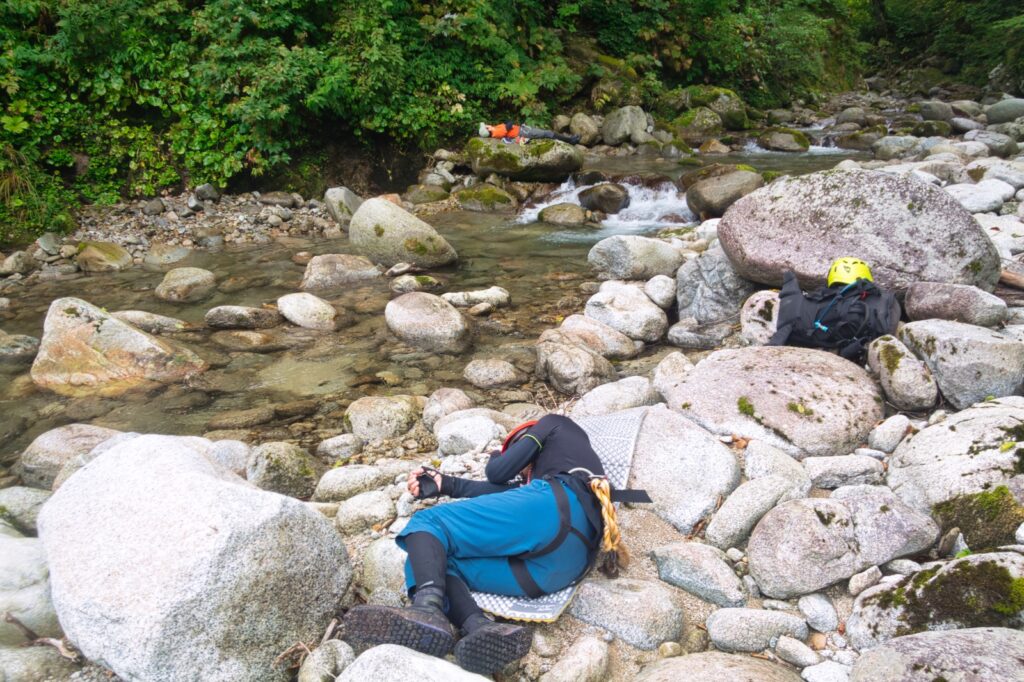
Gearing up, we stepped into the Asahimata-zawa. The granite riverbed was, as expected, extremely slippery. My rubber-soled boots carefully gripped the wet rocks, demanding constant vigilance. On both banks of the deeply cut V-shaped valley, the thick greenery of late summer still clung. Although it was September, the air in the gorge was cold and clinging to the skin.
We steadily gained elevation, carefully judging the slick, slimy surfaces of the rocks. The stream, named ‘Iwana-tome’ (The Iwana Stopper), welcomed us quietly for the time being. Towards the waterfalls, the three of us advanced silently and resolutely.
Part II: Deeper into the Gorge
For a while after we began the ascent of Asahimata-zawa, the flow remained gentle. We advanced by wading, with the water only reaching our navels. We encountered a succession of small waterfalls that were comfortable to climb, with no challenging sections that required us to bypass (maki).
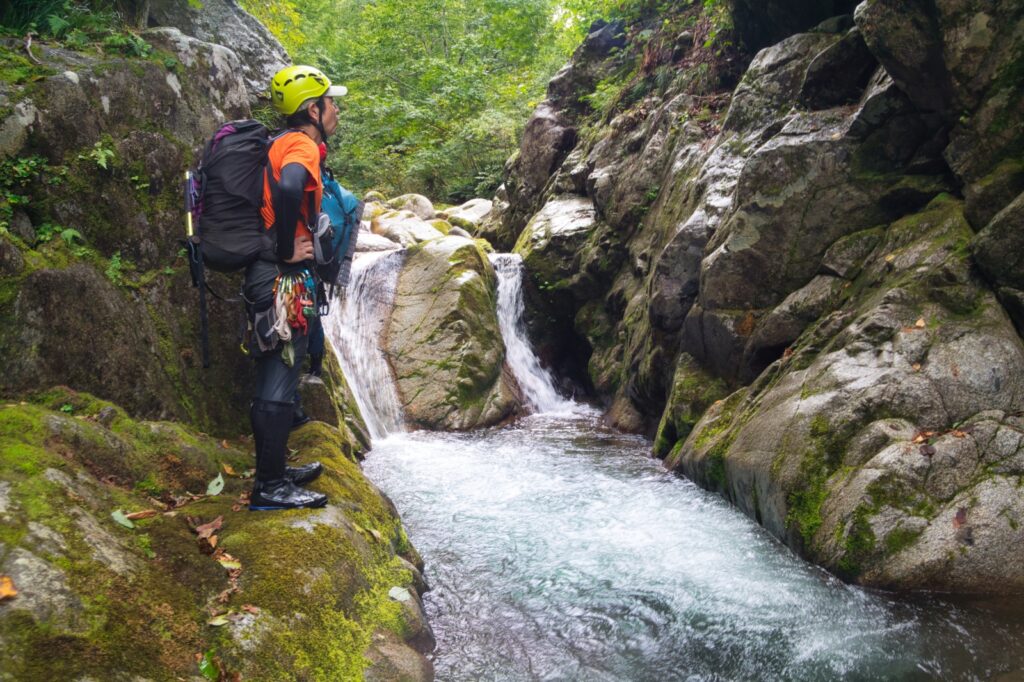
Just before the junction with Kamino-osawa, a small step, hardly a waterfall, appeared. As S attempted to traverse the section, he suddenly lost his balance and plunged into the water. We watched as the cold water instantly enveloped him. Seeing this, I decided to take the bypass. The sound of our laughter echoed through the valley.
Eventually, the valley began to narrow. The rock walls on both banks closed in, taking on the appearance of the V-shaped gorges typical of the Asahi Mountain Range. The sound of the water reverberated through the gorge, and thick moss clung to the rock faces. Although it was September, mosquitoes were numerous on the valley floor. The absence of biting midges (Mejiro) was the only relief.
As we gained altitude, waterfalls began to appear. The first obstacle was a six-meter overhanging waterfall. The water plunged down from a sheer, overhanging rock face. I attempted to climb the left side of the water line but couldn’t find a decisive hold. I threw off my pack and took the lead unburdened. Carefully placing my feet on the slimy, autumnal granite, I felt for holds and ascended.
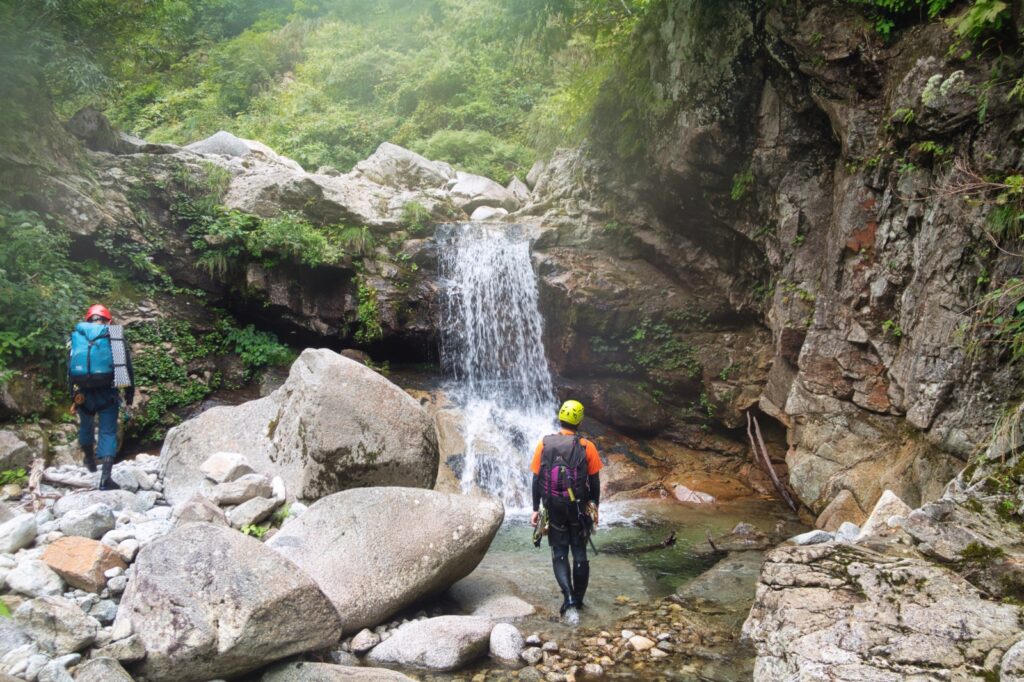
Next came a six-meter waterfall with an extremely slick surface. Although the water volume was low, it was clearly unclimbable. We decided to bypass it from the right bank (maki). We similarly bypassed a seven-meter waterfall from the left bank and descended via rappelling using a discarded fixed rope left behind by a previous party. The sound of the rope scraping against the wet rock echoed.
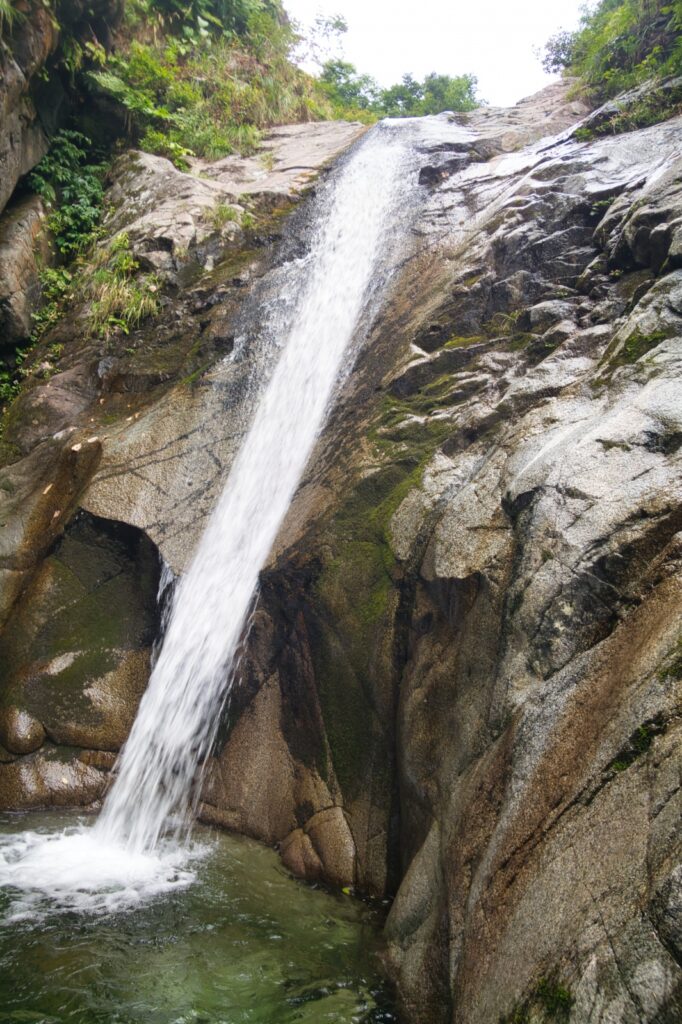
A ten-meter waterfall soon appeared before us. We chose to climb the slab-like left wall. The slope was gentle, but the presence of sand and soil on the rock made the footing precarious. We gained altitude step by step, shifting our weight cautiously and surely. The three of us worked in unison, encouraging each other with calls.
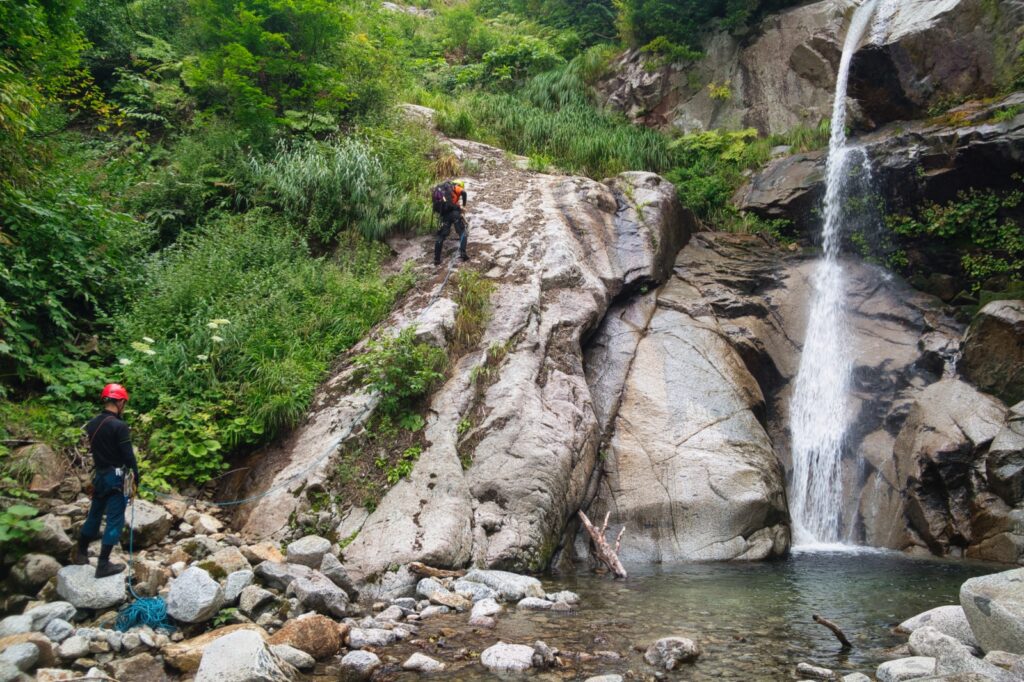
We bypassed the eight-meter waterfall from the right bank.
Around 2:50 PM, as we reached the 940m elevation mark, we began searching for a bivouac site. However, no ideal spot was to be found. Reluctantly, we decided to pitch our Tarp/Shelter (Zelt) on a narrow, flat area of the riverbed. It was hardly a prime location; calling it a luxury hotel would be a very humble exaggeration of our sleeping arrangements.
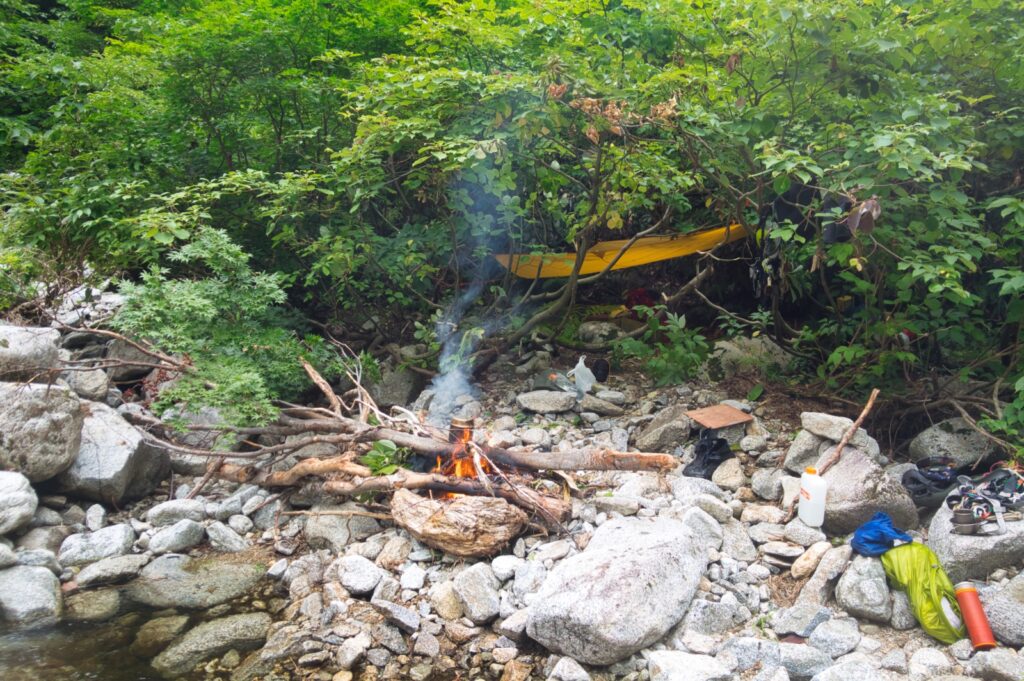
As the sun began to set, the valley floor cooled rapidly. We diligently collected firewood and built a fire. I prepared the Iwana we had caught as sashimi. S and M said it was their first time eating freshly caught char from the stream. The taste of fresh Iwana eaten in the gorge was exceptional. Their surprised expressions made us forget our fatigue.
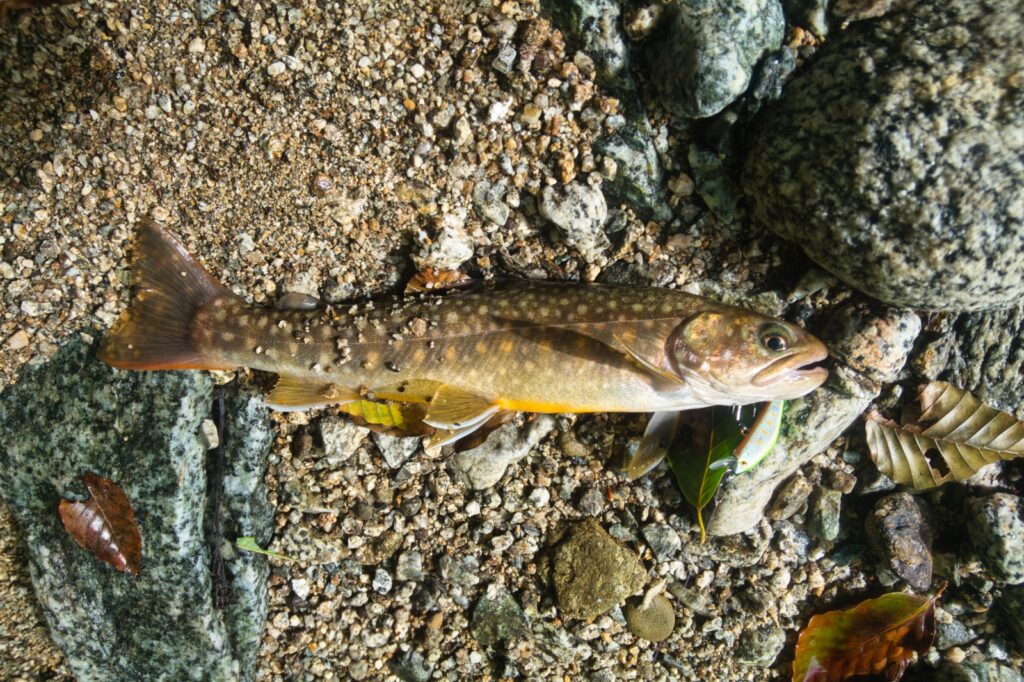
I put a mess kit of rice over the fire, but the firewood collapsed, and I carelessly knocked it over. The white rice grains scattered into the sand of the riverbed. Giving up, I pulled out emergency alpha-rice. Although it was a bland dinner, this is also a part of the pleasure of the mountain.
The time spent talking around the fire made us forget our exhaustion. The flames flickered, and the occasional crackling of the firewood broke the silence. Stars twinkled in the narrow strip of sky visible above the gorge.
We went to sleep around 8:00 PM, but I woke up at 10:00 PM. The cold air had soaked into my body. Outside the Zelt, only the sound of the Asahimata-zawa flowing remained constant. I gazed at the stars for a while before finally drifting back to sleep.
Part III: Beyond Iwana-tome
We woke up at 5:00 AM on the second day. The valley floor was still dim. We kindled a fire again and brewed coffee. The rising steam and rich aroma awakened our cold bodies. We slurped instant ramen for breakfast and departed the bivouac site at 6:20 AM.
The ten-meter waterfall, which was visible from our bivouac, was bypassed from the right bank.
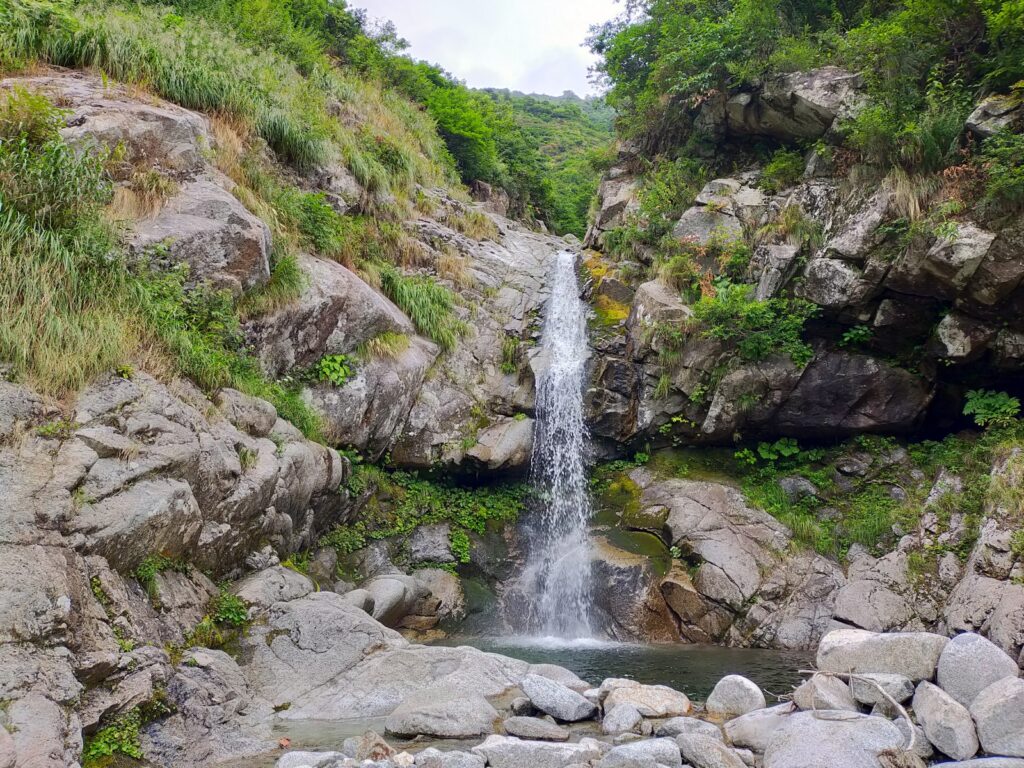
Advancing to the 1,050-meter elevation mark, we reached an open, riverbed-like area. Perhaps this spot would have been better suited for a bivouac. However, the narrow site we used last night was not bad either.
Eventually, the valley began to narrow again, and the Iwana-tome Waterfall itself finally appeared. It was not as high as it looked. We free-climbed the right wall and proceeded deeper into the gorge. The canyon characteristics intensified, with the rock walls pressing in closer.
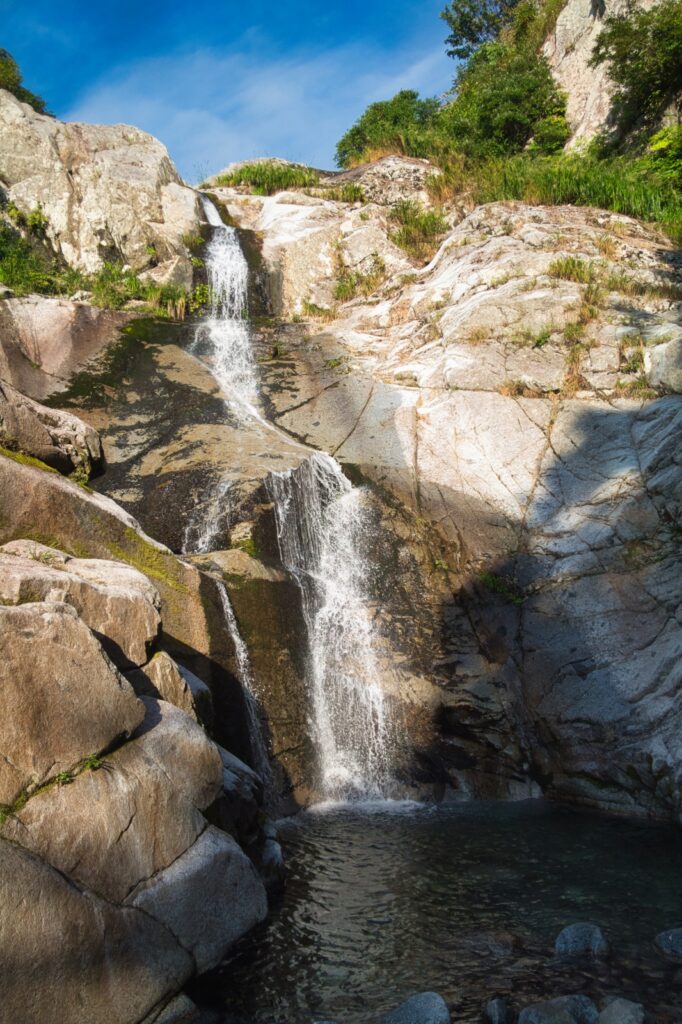
It was at that moment I carelessly dislodged a massive rock, easily weighing over a ton. Fortunately, the downstream partners S and M were far enough away to avoid it, but cold sweat ran down my back. In the mountains, one mistake can lead to an irreparable tragedy. We immediately focused our attention again.
An unclimbed CS (Waterfall blocked by a Chockstone) waterfall stood before us. We attempted to bypass it by climbing the water line of a brittle, adjacent stream and reached the ridge. It was then that we saw a fifty-meter waterfall to our right—the actual Iwana-tome fifty-meter fall. We realized we had mistaken our route. Since the three of us hardly ever read others’ logs anyway, we laughed off the mistake, traversed back, and took to the left wall of the correct waterfall. The CS waterfall we had climbed was just a tributary, not the Asahimata-zawa mainline.
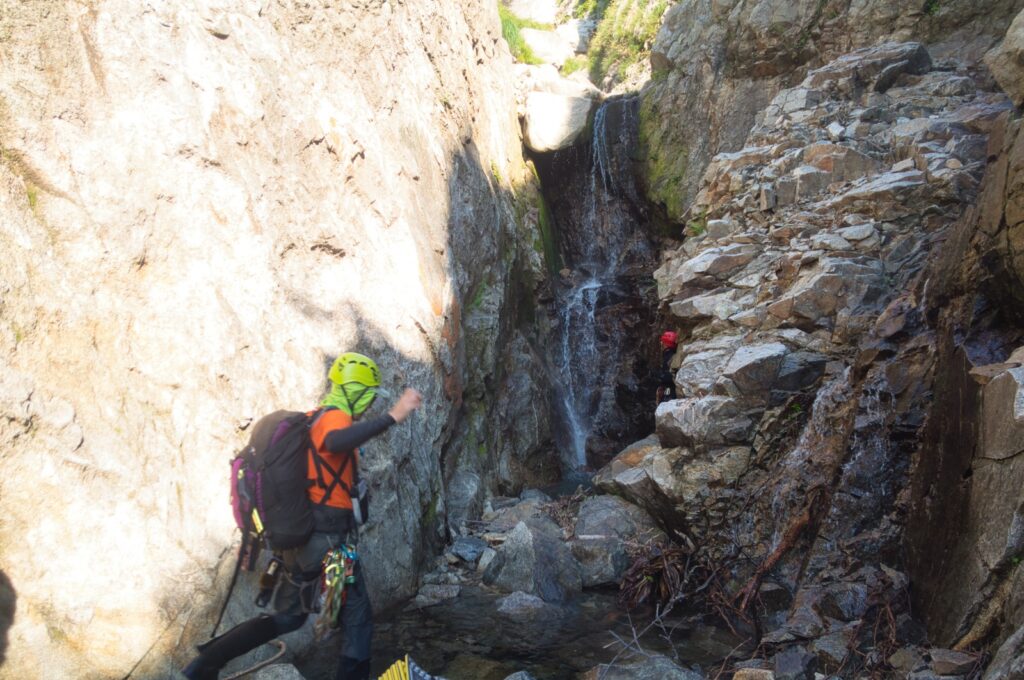
What followed was a sequence of continuous smaller waterfalls. Two to three-meter drops appeared one after another, none of them technically difficult. We crossed them surely and safely, paying close attention to every move. Our calls to each other echoed through the valley.
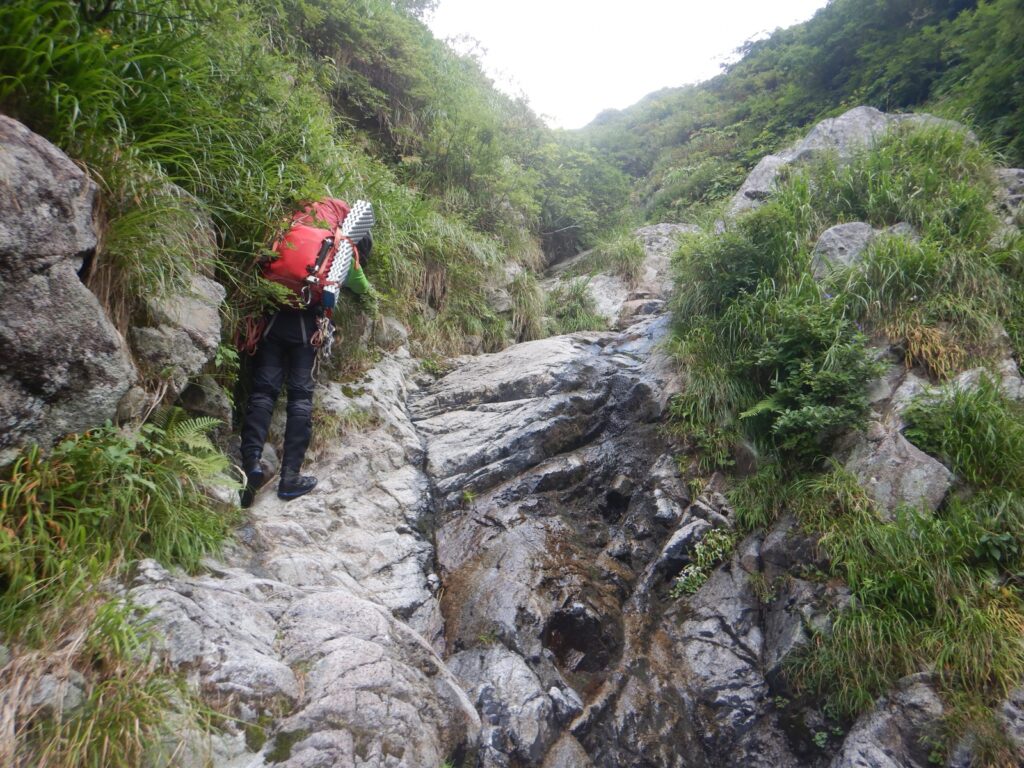
Eventually, the water disappeared, and as we traversed the boulder field (goro), the stream shape vanished. We reached a grassy alpine field (Sōgen). The sense of openness at the very top of the ascent was immensely satisfying. The area near the hiking trail transitioned into a dense zone of dwarf pine (Haimatsu) thickets, but by escaping toward the summit, we could minimize the arduous bushwhacking (yabukogi).
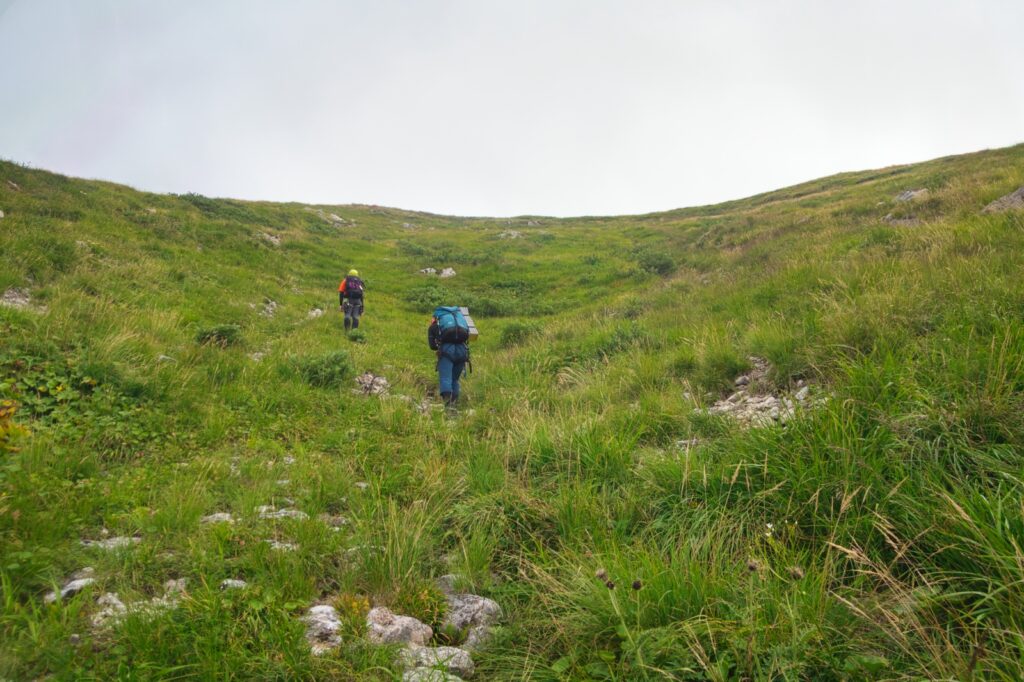
We navigated through the thicket. Since the growth ran in one direction, it was not as difficult as we had anticipated. Only about ten minutes remained until the summit.
At 11:40 AM, we stood on the summit of Mt. Asahi-dake. The ridgeline was busy with many hikers. Emerging from the V-shaped valley floor, we felt the illusion of having arrived in another world. We ate lunch and began the descent at noon, diligently making our way down the Nakatsuru Ridge. The fatigue and heat made the descent arduous.
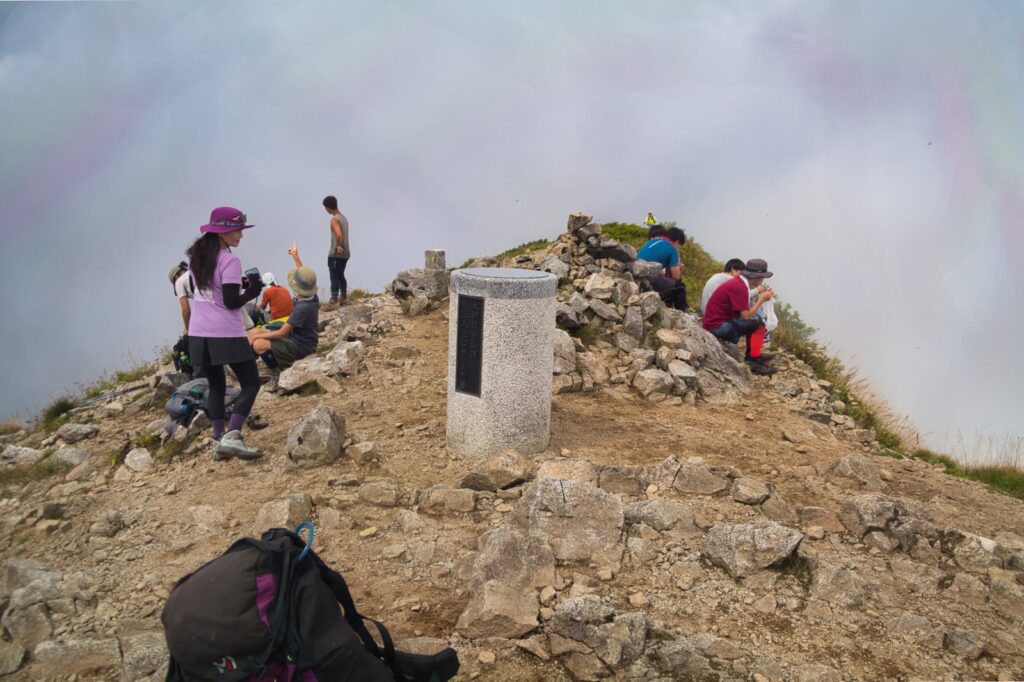
On the way down, I remembered the Tonbimaitake mushrooms we had seen that morning. However, when we returned to the spot where the clump had been, everything except the rotten pieces had been thoroughly harvested. I regretted not having taken them immediately upon finding them.
We safely completed the descent at 4:10 PM. The V-shaped gorges, the beautiful waterfalls typical of the Asahi Range, and the exhilaration of the final ascent. This autumn Sawanobori…
[LOG SUMMARY]
- Date: September 9–10, 2023 (2 Days)
- Team: 3 Members
- Route: Asahi Onsen → Confluence (Futamata) → Asahimata-zawa → Mt. Asahi-dake → Nakatsuru Ridge → Asahi Onsen
- Weather: Clear
- Water Level: Normal to Slightly Low
- Sawanobori Grade: Grade 3 (Based on Japanese Alpine Club/Local Standard)
- Climbing Grade: Grade III (Based on Japanese Alpine Club/Local Standard)
